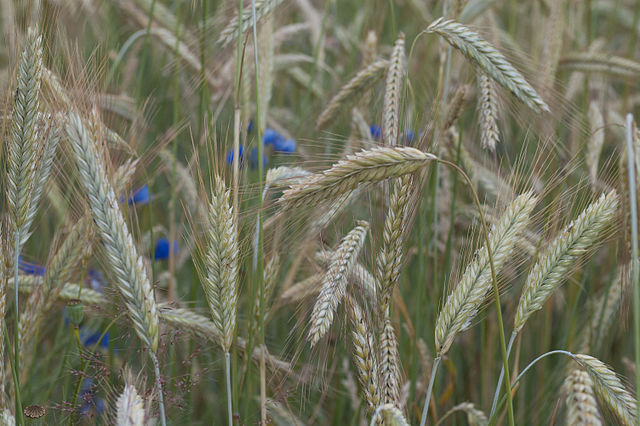It doesn’t really feel like spring yet. But a look at the agricultural land in the country shows that it is in the starting blocks. Agriculture doctor, Dr. Till Backhaus explains:
In autumn 2022, the farms in Mecklenburg-Vorpommern sowed winter rapeseed on 197,800 hectares of arable land for the upcoming 2023 harvest season. According to the Statistical Office, the sowing area for winter rapeseed is thus 5,500 hectares (+2.9 %) larger than the cultivation areas from May 2022. This means that the upward trend in winter rapeseed cultivation areas continues after a sharp weather-related decline in 2019. The cultivation of rapeseed has recently become more attractive for farms, in particular due to the higher market prices and the war in Ukraine. In addition, the yields for winter rapeseed in the 2022 harvest season were 40.5 dt/ha, despite heat periods and drought, +9.5% above the previous year.
Mecklenburg-Vorpommern is the federal state with the largest cultivated area with 197,800 hectares, followed by Saxony-Anhalt with 145,100 hectares.
Winter cereals from Germany were sown on 499,200 hectares for the 2023 harvest. This means that the sowing area decreases by 12,200 ha (-2.4%) compared to the cultivated areas from May 2022.
The sowing area for winter wheat, the most important cereal in terms of area, is 286,800 hectares. This is 19,900 hectares (-6.5%) less than in the 2022 harvest season.
The sowing area for rye and winter grain is assumed to increase by 8,400 hectares (+14.3%) to 67,400 hectares.
Triticale was sown on 10,600 hectares, which corresponds to a decrease of -24.6% (-3,500 hectares).
When growing winter goose, there is an increase in the sowing area by +2.1% (+ 2,700 hectares) to 134,400 hectares.”
Table 1: Sowing areas of winter field crops in autumn 2022 for the 2023 harvest
| Type of fruit | D 2017-2022 |
2022 | Autumn sowing 2022 for harvest 2023 | Change in autumn sowing 2021 compared to | ||
| D 2017-2022 |
2022 | |||||
| 1 000 ha | ||||||
| Winter cereals in total | 528.4 | 511,4 | 499.2 | -5,5 | -2,4 | |
| Winter wheat | 322,4 | 306.6 | 286,8 | -11,1 | -6,5 | |
| Winter rye | 61.0 | 59,0 | 67,4 | 10,5 | 14,3 | |
| Winter chard | 130,5 | 131,7 | 134,4 | 3,0 | 2,1 | |
| Triticale | 14,6 | 14,1 | 10,6 | -27,0 | -24.6 | |
| Cereals for whole plant harvest | 3,0 | 1,7 | 2,4 | -18,2 | 44,6 | |
| Winterraps | 188.9 | 192,3 | 197,8 | 4,7 | 2,9 | |
| 720.3 | 705.4 | 699,5 | -2,9 | -0.8 | ||
| Arable land (AF) | 1,073.0 | 1,071.5 | 1,072.0 | |||
| proportion of winter sowing at AF in % |
67,1 | 65,8 | 65,2 | |||
Source: Statistical Office MV, 2022
Regarding the weather conditions and plant development, Minister Backhaus explains:
“Low rainfall in combination with above-average temperatures led to high transpiration rates last summer. As a result, the water supplies in the soil were largely consumed. Last autumn was also extremely mild with below-average rainfall in many places. For the new seeds, however, the water supply was sufficient and the weather-related conditions could be used optimally. Well-developed stocks formed towards the winter.
In December, the short-term “classic winter weather” brought the desired hardening for the plants. In the further course, the vegetation rest was interrupted again and again before Christmas. In addition, it rained more often. Thus, at the first start of the season in mid-January 2023, there were predominantly vital, well-stocked stocks in our fields.
Due to the optimal conditions, the first N fertilization in winter rapeseed and winter cereals could already be carried out in many places at the beginning of February 2023. As in previous years, there was another winter slump at the end of February, beginning of March, in many places with a blanket of snow. This protected against the frosty temperatures, but then water saturation in the root area of the plants occurred after the onset of the thaw.
Currently, partial areas with brightening are noticeable in many cereal fields. The plants there are yellowish or grayish discolored, smaller in growth and more strongly affected by pathogens such as mildew and leaf spot disease. The affected areas have often expanded significantly in recent weeks, as they spread as weakness parasites on the plants weakened by cold, alternating frosts and possibly nutrient deficiency.
Low temperatures worsen the availability of nutrients in the soil. On the areas susceptible to manganese deficiency, the typical manganese deficiency symptoms are therefore often recognizable. According to the State Research Institute, manganese leaf fertilization is recommended here. For stocks without clear evidence of concrete nutrient deficiency, leaf fertilization with several (micro) nutrients for growth stimulation should be considered.”
Source: agrar-presseportal.de
